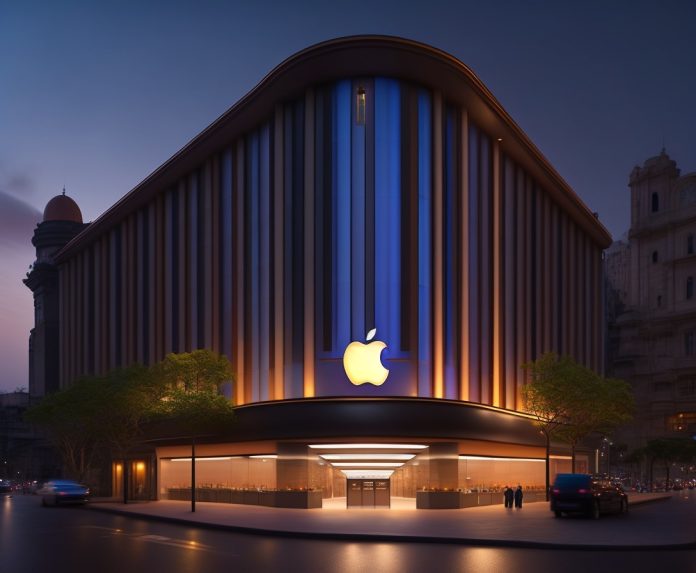In terms of innovation, design, product strategy, and execution, Apple is a market leader. Apple takes great satisfaction in improving experiences, but we often need to pay more attention to the process.
When Steve Jobs created Apple Computer in the late 1970s, he had big plans for the future. That ideal would only be realized for the majority of people years later. But why has Apple remained so popular all this time?
Was it cutting-edge technology? The difficult concepts? Simple patterns? Yes. To everyone. The design process enters the picture here. Every time Apple releases a new product, they add something new, but we must look before its release.
The Power of Simplicity
Simplicity is at the heart of Apple’s design ethos. The business is committed to eliminating extraneous complexity to produce a straightforward user interface. This strategy has opened up Apple goods to a wide range of users, regardless of their level of technical proficiency. Apple has improved user experience by focusing on simplicity, which lowers cognitive burden and increases usability.
Seamless Connectivity
Apple’s design philosophy emphasizes the importance of seamless connectivity throughout its ecosystem. Apple hardware and software integrate well, delivering a consistent user experience from macOS to iOS. User convenience and productivity are increased by the ease with which data can be readily synced and transferred between devices. Users may easily switch between various devices and platforms thanks to Apple’s design philosophy, which encourages a sense of harmony and continuity.
Detail-Orientation
Apple is renowned for its rigorous design attention to detail. Every detail is meticulously studied to produce a visually appealing and engaging experience, from the curved edges of the device to the motion of interface elements. This attention to detail extends to the components used in Apple products, including the selection of high-end materials and finishes, which add to a feeling of quality and craftsmanship.
User-Centric Approach
According to Apple’s design ethos, the user is at the heart of the experience. The organization undertakes in-depth user research and testing to comprehend user needs, behaviours, and preferences. Thanks to this user-centric strategy, Apple products are designed to satisfy the demands and expectations of their target market. Apple consistently enhances the user experience and alleviates user pain points by prioritizing user feedback and iterating on designs.
Impact on The Tech Industry
Apple’s design ethos has significantly influenced the tech sector. It has established a standard for design quality thanks to its emphasis on simplicity, seamless integration, attention to detail, and user-centric approach. Several rival companies have followed similar design principles, prioritising user experience and aesthetic appeal in their products. The industry has been held to a higher standard because of Apple’s design ethos, which has sparked innovation and placed a greater emphasis on user-centred design.
Planning For The Future
These design guidelines alter the way we utilize stuff. They have an impact on the construction and design of every product.
Users today are so used to simplicity in goods that we can no longer bear anything else. Products are expected to be used as tools. We don’t utilize blogs; we use Medium to read and learn. Instead of being on social media, we use Twitter to remain in touch, get news, and share our ideas.
The experience is different from the product. The experience is the task. A product’s effectiveness is determined by how readily it allows you to accomplish your goals.
Throughout its expansion and transformation, Apple led the way in this. This became the norm for all of Apple’s ground-breaking new product introductions. The future has already occurred and is still taking place today.
It happens in the small print, particularly in how we utilize and carry out things as humans. But it becomes clear that the future is already here once you step back and observe the changes.
Where Everything Began
What precisely did Apple do when it produced items that altered people’s lives? Think Different was their motto, and that is exactly what they did. Apple design methodology was more of a style of thinking than a procedure. It was a way of life for the workers who created the tools that would change the globe.
It was more than just a focus on the customer; it was more profound. Before it even reached the customer, it began.
The user experience of Apple’s products has been dramatically influenced by its design ethos. Apple has produced aesthetically pleasing, simple-to-use, and fun effects by emphasizing simplicity, seamless integration, attention to detail, and a user-centric approach. Its impact on the tech sector has resulted in a stronger focus on design excellence and user experience, suitable for people everywhere.
FAQs
Apple emphasizes simplicity. The company strives to simplify its products for users of all technical levels.
Apple stresses ecosystem connectivity. From macOS to iOS, Apple hardware and software work together to make data transfer simple.
Apple takes design seriously. To create an immersive and aesthetically pleasing user experience, every detail, from rounded device edges to interface element movement, is considered.
Apple prioritizes user experience. The company conducts extensive user research and testing to understand user needs, behaviors, and preferences and create products that meet target market expectations.
Apple’s focus on simplicity, seamless integration, attention to detail, and user-centricity has set a high standard for design quality in the tech industry. This has inspired other companies to focus on user experience and design.
Apple’s design principles set expectations for ease of use and simplicity. Future product design will prioritize user experience over product features, ensuring that a product’s effectiveness is measured by how easily it helps users achieve their goals.
“Think Different” was Apple’s design philosophy. This mindset prioritized understanding user needs, behaviors, and preferences before products reached consumers, resulting in life-changing products.
Apple’s design philosophy has shaped product usability. Apple sets new user experience standards by prioritizing simplicity, seamless integration, attention to detail, and a user-centric approach.
